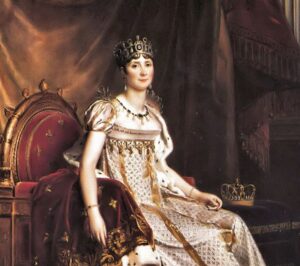Hannibal is considered one of the greatest generals in history. Leading the Carthaginians against Rome in the Second Punic War, Hannibal relied on surprise, daring, and cunning to annihilate three Roman armies. He then ravaged Italy for almost 15 years while the Romans refused to meet him in open battle. Hundreds of years later, even Roman school children knew that the Latin exclamation “Hannibal ad portas!” (“Hannibal at the gates!”) meant impending danger.[1] So why did Hannibal lose the Second Punic War? There are several explanations:
-
-
- The system of checks and balances in the Roman government.
- The strength of the Roman alliance system
- Hannibal’s lack of aggression
- Hannibal’s inability to conduct sieges
-
While most commentators focus on the first three explanations, here we argue that the fourth – Hannibal’s inability to conduct sieges – largely explains his defeat.
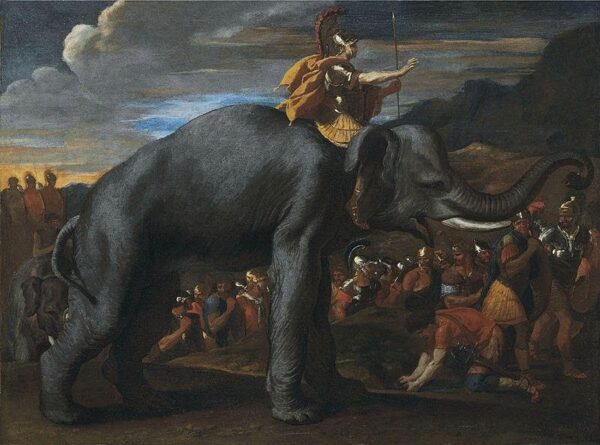
Nicolas Poussin, Hannibal traversant les Alpes à dos d’éléphant: Known for his daring military exploits, Hannibal surprised the Romans by leading his army over the Alps to invade Italy.[2]
Hannibal had more difficulty assaulting cities
Siege warfare played an important role in Hannibal’s ultimate defeat. Once the Romans refused to meet Hannibal in open battle, the style of war changed to prolonged siege warfare. Each side, either through battle or persuasion, tried to capture the cities on the Italian peninsula, to acquire that city’s manpower and resources.
The new state of affairs favored Rome. The Romans had more manpower, siege experience, and local contacts. As a result, the Romans could conduct sieges with one force while shadowing Hannibal with another, more easily win a siege by assault, and persuade city locals to open their gates. Hannibal had none of these advantages. As such, Rome kept Hannibal in check while winning the war in Sicily, Spain, and finally, Carthage itself.
Why sieges were so difficult in the time of Hannibal
Typical defenses
Important cities in Hannibal’s time had substantial defenses to keep out invaders. While large stone walls were the primary form of defense (see the picture of the Servian Wall below), cities often obtained extra protection by taking advantage of natural terrain (e.g., hilltops, rivers, and marshes) or constructing citadels, towers, or moats.
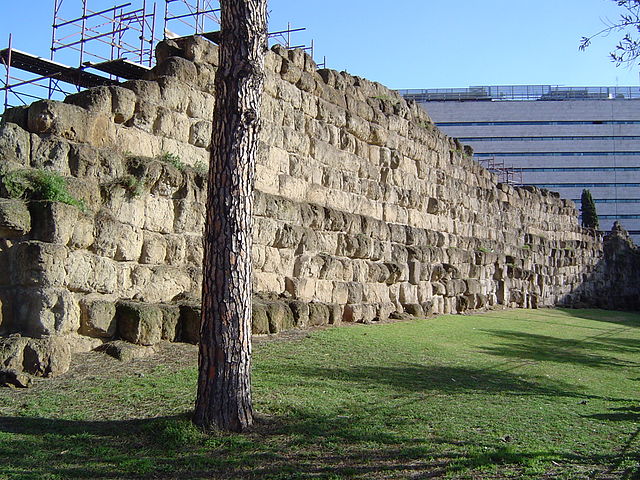
The Servian Wall: About 4 meters thick, 10 meters high, and 11km long, Rome’s Servian Wall deterred Hannibal from attacking the city after his victory at Cannae.[4]
The description of defenses during the Second Punic War indicates that virtually all cities had strong walls in addition to some other form of defense. The Greek city of Tarentum in Southern Italy had a strong citadel in the center of town plus harbor defenses.[5] New Carthage in Spain relied upon a lagoon to prevent invaders from attacking from the north and sea defenses to thwart assaults from the south.[6] Syracuse was particularly well-defended. In addition to several levels of walled defenses to protect individual districts within the city, the mathematician Archimedes developed an array of highly effective catapults and ballistae to repel Roman assaults. The Romans also reported that Archimedes developed a giant claw to grab Roman ships plus a mirror system that channeled the sun to burn holes in Roman sails.[7]
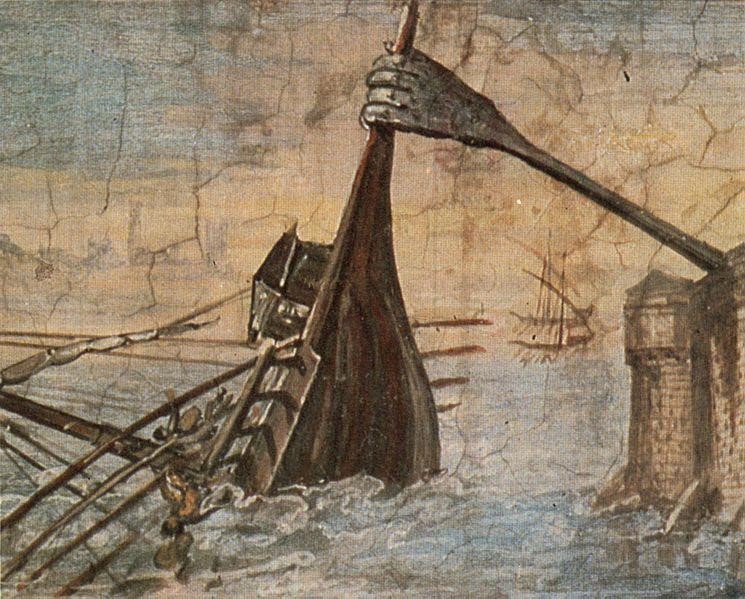
Guilio Parigi, Detail from a Wall Painting of the Claw of Archimedes: The mathematician Archimedes designed the defenses of the city of Syracuse, including a claw that could grab enemy ships.[8]
Ways to take a city in Hannibal’s time
These effective defenses influenced the methods ancient attackers would use to take a city.
By treachery
Taking a city by treachery involved bribing or convincing someone on the inside to grant the army passage through the city gates. This happened surprisingly often. For instance, the city of Tarentum was first betrayed to Hannibal by a group of disaffected nobles, while it was later betrayed back to the Romans by a Tarantine that fell in love with the sister of a Roman soldier.[9] Taking a city by assault was far less common. Livy tells us that after the Romans decisively defeated the Carthaginians in Sicily, of the twenty-six cities that refused to surrender to the Romans, twenty were taken by betrayal, while only six were taken by assault.[10]
By assault
Storming a city generally involved using ladders, rams, and siege towers to get an army through the walls. Casualty rates could be high. When Scipio Africanus assaulted New Carthage with 27,500 men, he suffered “heavy casualties” from the city’s 3,000 defenders, most of whom were hastily armed townspeople.[11] Given the high casualty rate of an assault, if an army could not obtain insider-betrayal, it would usually decide to surround the city in a siege to starve the inhabitants inside the walls.
By blockade and starvation
Sieges lasted a long time in ancient warfare, even when a besieging army came well-prepared. In the first Punic War, the Romans conducted a nine-year siege of Lilybaeum in Sicily along with an eight-year siege of the city of Drepana. Before the outbreak of the Second Punic War, Hannibal took eight months to capture Saguntum in Spain with his full army and heavy siege weapons constantly pressuring the city’s defenses.[12] A siege could be a time-consuming and, therefore, dangerous prospect. A besieging army need to supply its own troops and avoid being trapped by enemy reinforcements.
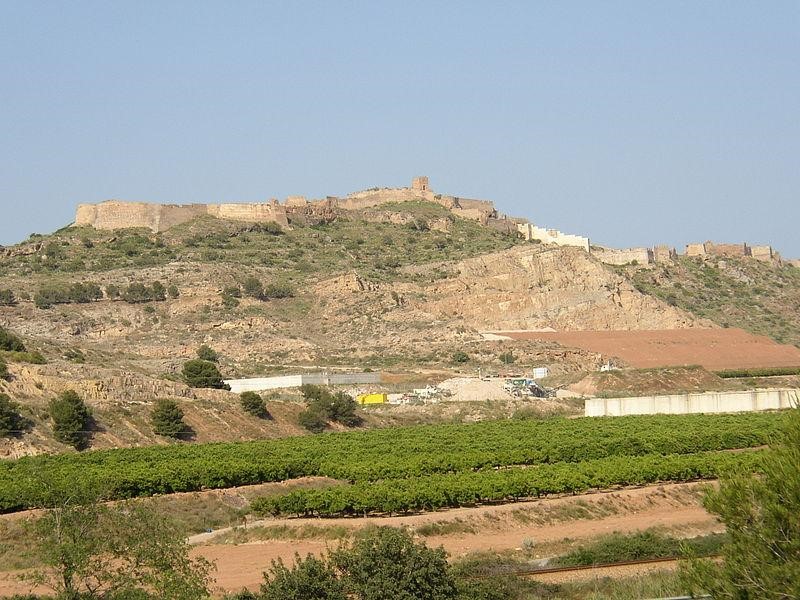
The City of Saguntum: At the outbreak of the Second Punic War, Hannibal spent eight months besieging Saguntum before crossing the Alps[13]
Hannibal’s disadvantage in acquiring cities
With this in mind, Hannibal struggled to take cities no matter which of the three methods he used.
By blockade and starvation
Conducting any long, drawn-out siege placed Hannibal in a difficult position. Not only did fixing his army in one place allow the Romans to attack Carthage’s allies elsewhere in Italy, but it also deprived Hannibal of his mobility on the battlefield. Early in the war, Hannibal succeeded by cleverly using his cavalry and luring the Romans into vulnerable positions. At Cannae, Hannibal arranged his troops so that his superior cavalry could surround the Roman infantry. At Lake Trasimene, Hannibal ambushed the Roman army on the north shore of a lake engulfed in morning mist. Camping next to a city would restrict Hannibal’s ability to position his mobile troops and select a favorable battlefield.
By assault
Hannibal faced more severe difficulties when it came to direct assaults. Having a smaller army than the Romans and cut off from reinforcements from Carthage, Hannibal couldn’t risk high casualties. Furthermore, some authors suggest that Hannibal abandoned his heavy siege equipment when he crossed the Alps.[14] Unlike the Romans, who managed to construct sophisticated naval siege ladders called sambuca to attack Syracuse[15], Hannibal was limited to the basic siege equipment available from the materials and engineers he could find in Italy.

Example of sambuca: The Romans and Greeks constructed sophisticated siege engines to attack enemy cities. This sambuca, for instance, enabled marines to scale enemy walls from their ships. Having abandoned his siege train when crossing the Alps, Hannibal could only construct basic siege weaponry from whatever he could find.[16]
By treachery
Hannibal’s only way to take a city then, was to find insiders willing to join the Carthaginian side. After his victory at Cannae, some cities joined Hannibal’s side entirely without the threat of violence. Capua, the second largest city in Italy, simply negotiated an alliance with Hannibal. Other cities, like Tarentum, were betrayed to Hannibal by a smaller group of conspirators once Hannibal camped outside their walls. Even these high profile defections could have their drawbacks. The Romans often had garrisons placed in citadels of suspect allies – even after Hannibal gained Tarentum, he could not dislodge the Roman garrison in its citadel, which managed to prevent Hannibal from using the city’s port freely. Similarly, when Rome returned to attack their former allies, several decades of interaction with the Romans ensured that there were at least some Roman supporters within the city walls.
Evidence of Hannibal’s disadvantage
Examining siege warfare throughout the Second Punic War demonstrates that the advantage lay with the Romans, who managed to use a mix of betrayal, assault, and starvation to capture fortified strongholds. Here are the major sieges conducted by the Romans:

By contrast, Hannibal’s only major siege victories were Tarentum by betrayal and the smaller cities of Nuceria and Casilinum by starvation while the Romans regrouped in the immediate aftermath of Cannae. A half-hearted attempt to besiege Naples was made in 216 but quickly abandoned.[17] Later, Hannibal tried to draw Roman legions away from the siege of Capua by camping outside of the walls of Rome. The Romans considered the action so unthreatening that supposedly the land Hannibal occupied was sold at its usual price in auction since it would soon be returned to Roman control once Hannibal gave up his siege attempt.[18] Hannibal did and Capua fell.
Conclusion
Much attention is given to the Roman strategy of avoiding Hannibal in battle after his initial successes culminating in the destruction of the Roman army at Cannae. While harrying Hannibal’s forces certainly disrupted his ability to conduct offensive operations and prevented him from destroying large Roman armies, the Romans’ advantage in siege warfare was the key to their success. While Hannibal was shadowed throughout Italy, the Romans blockaded, stormed, and bribed cities allied to Hannibal throughout Spain, Sicily, and Italy. Hannibal’s inability to match the Romans in siege warfare ultimately contributed to his defeat.
Interested in Ancient Rome? Check out our article on Roman gladiators.
Have other Roman topics you’d like us to write about? Send us an email at [email protected].
References
[1] Cicero, Philippics, 1.5
[2] Poussin, Nicolas. Hannibal traversant les Alpes à dos d’éléphant. 1625. https://commons.wikimedia.org/wiki/File:Hannibal_traversant_les_Alpes_%C3%A0_dos_d%27%C3%A9l%C3%A9phant_-_Nicolas_Poussin.jpg
[3] Livy, Ab Urbe Condita Libri, 22.51.
[4] Arya, Darius, “Murus Servii Tullii,” Ancient Rome Live, October 24, 2019, https://ancientromelive.org/murus-servii-tullii-servian-walls/
[5] Goldsworthy, Adrian K. The Fall of Carthage: The Punic Wars, 265-146 Bc. London, Great Britain: Phoenix, 2006. Print, pg. 251.
[6] Ibid, 296.
[7] Ibid, 285-287.
[8] Parigi, Guilio. Detail from a Wall Painting of the Claw of Archimedes. https://commons.wikimedia.org/wiki/File:Parigi_griffe.jpg
[9] Goldsworthy, The Fall of Carthage, 255.
[10] Ibid, 289.
[11] Ibid, 296-297.
[12] Ibid, 154.
[13] Pelayo2, Sagunto Castillo, Wikimedia Commons. April 30, 2006.
[14] Shean, John. “Hannibal’s Mules: The Logistical Limitations of Hannibal’s Army and the Battle of Cannae, 216 B.C.” Historia: Zeitschrift für Alte Geschichte. 2Q, 1996. Page 163. https://www.jstor.org/stable/4436417
[15] Goldsworthy, The Fall of Carthage, 285.
[16] https://commons.wikimedia.org/wiki/File:Sambuke-gelo4.jpg
[17] Goldsworthy, The Fall of Carthage, 242.
[18] Livy, 26.11.6.


